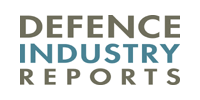COLUMBUS, March 6, 2012
Glass Laminate Cover Adapted by Defense Logistics Agency Saves Money, Protects MRAP Windows
An idea used by stock car racers and adapted six years ago by the Defense Logistics Agency for military use has been introduced for use on Mine Resistant Ambush Protected vehicles in Afghanistan.
NASCAR has been using tear-away film on race car windshields since 1997, and DLA Aviation – then Defense Supply Center Richmond, Va. – adapted the material six years ago for use on Black Hawk helicopters and other systems at the suggestion of two Army National Guard mechanics from Virginia. Now DLA Land and Maritime supplies a similar laminate, Cold Lava, to protect the expensive ballistic glass on Mine Resistant Ambush Protected vehicles in Afghanistan.
Use of the laminate has saved thousands of dollars. In the case of an aircraft application, the Army saves nearly $14,000 each time a windshield replacement is avoided, officials said.
With the average piece of MRAP ballistic glass costing $2,000 plus labor, officials estimate the laminate could save the government as much as $75 million annually.
NASCAR officials have for years required drivers to use Lexan, a clear tough plastic, for its windshields to protect drivers from flying debris. Since Lexan tends to chip and scratch after several hundred miles of racing, the windshields can become nearly impossible to see through and need help. The polycarbonate/glass used on shatterproof aviation windshields has similar weaknesses that are solved by the laminate, which is applied by soldiers with a simple tool kit.
"The MRAP Cougar uses a five-layer sheet protection on the exterior windshield glass to allow sheets to be removed as they become worn and damaged, which in turn keeps occupant visibility optimal," said Scotty Achatz, readiness support lead, Land Readiness Room.
"We often use a nomenclature of 'transparent armor,'" added Brent Watson, a weapon system support manager for DLA Land and Maritime.
The reason most MRAP glass is replaced is because of scratches, rock strike cracks, sand abrasion and delamination that impairs the vision of the occupants, Watson said.
It wasn't a simple matter of taking the NASCAR version and fitting it on military vehicles, however. Modifications had to be made to the laminate to allow use of night vision equipment. Also, the tendency of the filmlike material to retain electrostatic energy had to be fixed. This was accomplished by adding a layer of material. The materials now used for the MRAP are quite different from the product used for NASCAR, officials said.
As a Department of Defense combat support agency, DLA provides the Army, Navy, Air Force, Marine Corps, other federal agencies, and joint and allied forces with a variety of logistics, acquisition and technical services. The agency sources and provides nearly 100 percent of the consumable items America's military forces need to operate, from food, fuel and energy, to uniforms, medical supplies, and construction and barrier equipment. DLA also supplies more than 80 percent of the military's spare parts.
Headquartered at Fort Belvoir, Va., DLA has about 27,000 employees worldwide and supports more than 2,178 weapon systems. For more information about DLA, go to www.dla.mil, www.facebook.com/dla.mil or http://twitter.com/dlamil.
Article written by Tony D'Elia, a public affairs specialist with DLA Land and Maritime located in Columbus, Ohio.
SOURCE Defense Logistics Agency
CONTACT: Michael Jones, +1-614-692-2502, Michael.Jones@dla.mil
